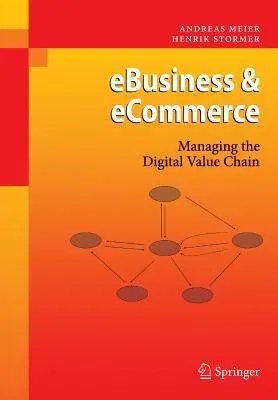Over a decade ago, the European Union adopted a "plan of action for a
European information society." Internet technologies should broaden the
capacity to act of organizations and of individuals, promote
transnational contact and exchange relationships, and lead to an open
society with cultural originality and variety. To achieve this, the
opportunities and risks of utilizing electronic means of c- munication
must be weighed against each other, and privacy and intellectual
property rights must be protected. Due to technological development and
the use of Internet technology, the
productionofinformationhasgainedeconomicsigni?cance.Aninformationc- pany
creates value primarily by designing, processing, and relaying
information; in other words, through the exchange of digital products
and services.
Thistextbookprogressivelydescribesalloftheelementsofthevaluechainfor
electronic business and electronic commerce. A process-oriented approach
is used to present the electronic business transactions that occur
between companies, consumers, andpublicadministration,
andtheseareillustratedwithcasestudies. Along with the organization of
digital products and services, special attention is paid to marketing,
distribution, and customer relationship care. This textbook is intended
for students of economics at universities and te- nical colleges who
would like an overview of the state of the art in electronic business
and electronic commerce. It is also suitable for executives, project le-
ers, and company experts who deal with the digital value chain. The book
focuses on the members of value chains in electronic business re-
tionships. Each of these members has a chapter devoted to it: Chapter 1
describes the terms of electronic business, electronic commerce, and
electronic government, and gives meaningful examples of their
application.


